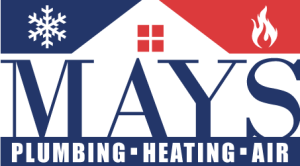The Plumbing Pitfall: 6 Unsuspecting Reasons Your Home Might Be Suffering from Poor Water Pressure
Water pressure is often one of those features that goes unnoticed until it becomes an issue. Suddenly, when you step into the shower for a refreshing experience, you’re met with a lackluster stream that leaves you feeling more frustrated than clean. Poor water pressure can be an inconvenience, affecting everything from your daily hygiene routines to the functionality of your home appliances. Below, we will explore *six unsuspecting reasons* why your home’s water pressure might be faltering.
Understanding Water Pressure
Before diving into the causes of poor water pressure, it’s important to understand what water pressure actually is. Water pressure refers to the force of water flowing through the pipes in your home. This force is what pushes water out of your faucets, showers, and appliances. Issues can arise from a variety of sources, and identifying the problem is the first step toward restoring it.
1. Leaks in the Plumbing System
*Leaks can be sneaky* and often go unnoticed until significant damage has already occurred. A small leak in a pipe can divert water away from its intended path, leading to diminished water pressure. Here are some common signs of leaks to look out for:
- Higher Water Bills: An unexplained increase in your water bill can signal a hidden leak somewhere in your plumbing.
- Wet Spots: Patches of dampness or water pooling in your yard or beneath your floors can indicate a larger leak in your plumbing system.
- Unpleasant Odors: In cases where wastewater is leaking, you may notice foul smells coming from your plumbing.
To accurately identify leaks, consider hiring a professional plumber to conduct a thorough examination of your plumbing system. Regular checks can prevent further damage and restore your water pressure.
2. Clogged Pipes or Fixtures
Over time, mineral deposits, grease, and debris can accumulate within the pipes and fixtures of your plumbing system. This buildup can block water flow and result in decreased pressure. Pay attention to the following areas where clogs commonly develop:
- Faucets and Showerheads: If water is trickling instead of flowing freely, mineral buildup can be the culprit. Soaking these fixtures in vinegar can help dissolve the deposits.
- Drains: Slow-draining sinks or bathtubs often suggest a clog that could affect overall water distribution.
Regular maintenance, including pipe cleaning and replacement of worn-out fixtures, can enhance water flow and boost pressure. Consider adopting a preventative approach to keep your plumbing system running smoothly.
3. Pressure Regulator Malfunction
Your home may have a pressure regulator, which is a device that controls the pressure coming into your plumbing system from the main supply. If this regulator malfunctions or becomes faulty, it can lead to low water pressure throughout your home. Signs of a failing pressure regulator can include:
- Fluctuating Water Pressure: If you’ve noticed sudden spikes and drops in your water pressure, your regulator may be faulty.
- Corrosion or Damage: Physical damage or visible corrosion on the regulator itself can signal a need for replacement.
Proper installation and maintenance of the pressure regulator can ensure consistent water pressure. If you suspect an issue, consult a professional plumber who can diagnose and resolve the problem efficiently.
4. Problems with the Municipal Water Supply
Sometimes, the issue may not stem from your plumbing but rather from external factors related to your municipal water supply. *Several issues can arise* that may affect the pressure you’re experiencing:
- Water Main Breaks: If repairs are being made to a water main in your area, it can lead to fluctuations in water pressure.
- Pipes Being Rerouted: Local infrastructure maintenance or upgrading can sometimes disrupt the normal flow of water to your home.
If you suspect the municipal supply is causing issues, it may be worth checking with neighbors to see if they are experiencing similar problems. Additionally, contacting your local water supplier can provide insights into ongoing issues that might be affecting your water pressure.
5. Aging or Deteriorating Pipes
The age and condition of your home’s plumbing can heavily influence water pressure. Older pipes, particularly those made from iron or galvanized steel, may corrode and restrict water flow over time. Here are *some tell-tale signs* of deteriorating pipes that should not be ignored:
- Rusty Water: If you are experiencing discolored water along with low pressure, your pipes may be rusting internally.
- Frequent Leaks: Multiple leaks occurring in various areas of your plumbing can indicate that your pipes are on their last legs.
Replacing aging pipes with modern materials such as PVC or copper can significantly improve overall water pressure and prevent future problems. Consider consulting with a plumbing professional if you suspect that your pipes are the source of the trouble.
6. Incorrect Plumbing Design or Installation
Finally, homeowners may find that their original plumbing design is the reason for poor water pressure. Factors such as improper sizing of pipes, incorrect slope in drainage pipes, or poorly placed fixtures can lead to pressure issues. *Common examples include*:
- Pipes That Are Too Small: If your home’s plumbing was not designed with the proper diameter pipes, it can restrict water flow throughout the system.
- Too Many Bends or Turns: Excessive bends in plumbing can lead to increased friction, causing low pressure at the fixtures.
If your home has an older plumbing system or renovations have occurred, it might be beneficial to have a professional plumbing consultation to assess the overall design and functionality. Improvements can lead to enhanced performance and pressure.
Conclusion
Persistent issues with low water pressure can stem from a variety of sources, ranging from *dangerous leaks* to *unfortunate plumbing design*. Understanding the potential pitfalls that can compromise your water pressure is the first step in addressing the problem. Homeowners should prioritize regular maintenance and inspections to catch potential issues early and ensure that their water supply remains strong and reliable. Don’t ignore the signs; a little attention to your plumbing system can go a long way toward keeping your home running smoothly.
Should you encounter ongoing five issues with your water pressure, seeking the expertise of a qualified plumber can provide you with tailored solutions that fit your unique situation.












